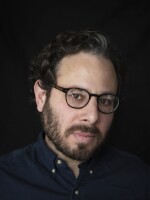How much does $1 billion buy these days? The city of Buffalo is about to find out.
New York state is funneling $1 billion in cash and tax incentives into the region. Fully half of the "Buffalo Billion," as it's known, is going to one place: a massive solar panel factory, rising on the site of a demolished steel factory in South Buffalo. With an additional $250 million from other state sources, the solar project is getting a total of $750 million from New York.
"There's nothing nearly this big in the U.S.," says Steve James, senior vice president for operations at SolarCity, the company that will lease the finished factory from the state. Until now, SolarCity bought all its panels from China. But James says that will change when this million-square-foot factory opens late next year. "We really sharpened our pencil," James says, "and made sure that every aspect of it — the whole supply chain — is low enough cost to be very competitive globally."
The state is betting that James is right and that SolarCity is going to turn Buffalo and western New York into a hub for advanced manufacturing and renewable energy.
The goal of the Buffalo Billion is to stoke an economy that's just started to grow again after half a century of decline. Real estate prices are going up. Millennials are moving into the city. And for the first time in years, giant construction cranes are rising into the sky.
"The outlook for Buffalo is a lot different than it was five years ago," says Howard Zemsky, a local real estate developer and the president of Empire State Development, the state agency that's in charge of the Buffalo Billion.
On a recent tour of the city, Zemsky showed off a construction site on the Buffalo Niagara Medical Campus near downtown. There, stood one brand medical new building, across the street from another that's still under construction — thanks in part to millions of dollars from the Buffalo Billion.
"For a town that would've been easy to bet against after 40 years of decline," says Zemsky, "I think it's had a huge impact on Buffalo and western New York."
But to skeptics, it's a risky bet.

"It better pan out. If it doesn't, boy, that's a lot of money that didn't work," says James Allen, executive director of the Amherst Industrial Development Agency in Buffalo's largest suburb. Allen wishes more of that money was going to help startup companies get off the ground.
"If you look at Silicon Valley, you look at Austin, you look at Research Triangle, they grew organically," Allen says. "We're trying to do something that's never truly worked, which is try to lure a company in that's so wonderful that it's going to attract new, other companies to the area."
Betting On Solar
New York state is betting on a company that has so far had trouble turning a profit. And Wall Street is nervous about what happens to SolarCity when the federal tax credit for consumers to buy solar panels expires next year.
But Zemsky defends the state's investment. "We own all the equipment, we own the facility, which is really where most of that money goes to," Zemsky says. "So in the worst case scenario, the state is left with an amazing asset."
There are also questions about how the contracts for these huge construction projects were handed out. Preet Bharara, the U.S. attorney in Manhattan, reportedly issued subpoenas about those contracts earlier this year. That inquiry added to concerns that the state's investment won't be shared equally with everyone in Buffalo.
"It's a billion, but for whom?" asks Charley Fisher, a former Buffalo city councilman and community leader on the city's east side, which is largely African-American and low-income. Fisher wants to make sure everyone in the city has a shot at the new jobs. "It could be that a billion dollars could come here," says Fisher, "and if we're not careful, the disparities won't change."
The Buffalo Billion does include more than $30 million for job training. And SolarCity's Steve James says the company will need to hire a lot of different skill sets. "Everything from people right out of high school, two-year degrees, four-year degrees, Ph.D.s," James says. "There will be a few people like me coming from the outside, because we don't have the experience here. But almost everyone is gonna be local."
SolarCity has committed to hiring 500 people in the factory and a total of 5,000 in the state. But the folks who live near the factory in South Buffalo are skeptical.
"They're gonna hire top notch people. They're not just gonna hire people off the street for anything," says Jack Sengbusch, who's been living in South Buffalo since there was a working steel plant on the SolarCity site. "Back in the day, most of the people lived in South Buffalo that worked in this place," he recalls. "Businesses were going. Nothing was shut down. Now you look at it today, it looks like a ghost town."
Sengbusch says the solar panel factory is a good start. But it's going to take a lot more to replace what South Buffalo — and the rest of the city — have lost.
Copyright 2021 NPR. To see more, visit https://www.npr.org.




